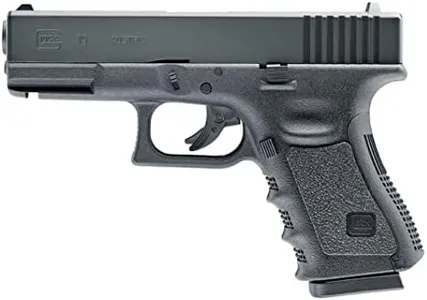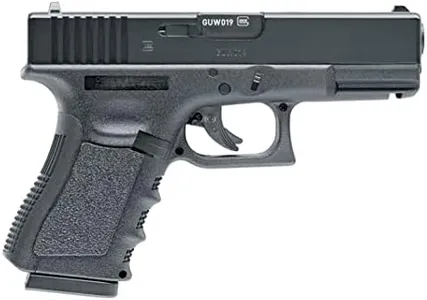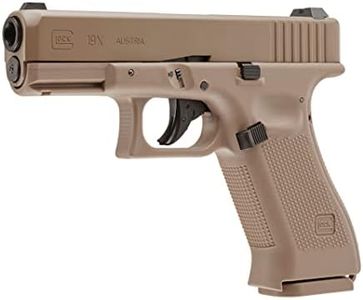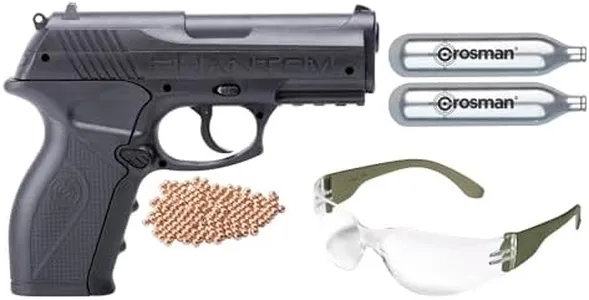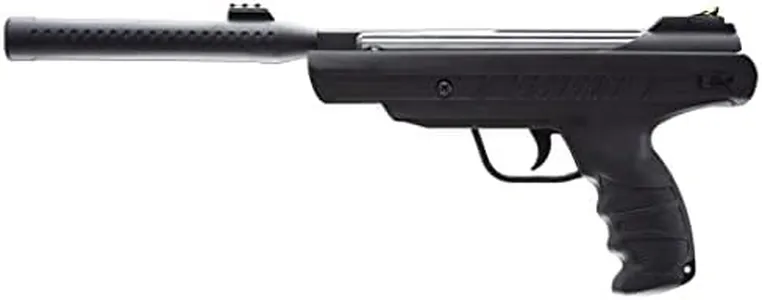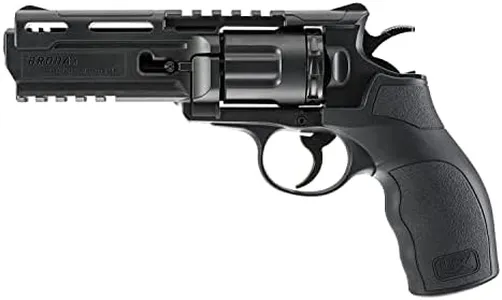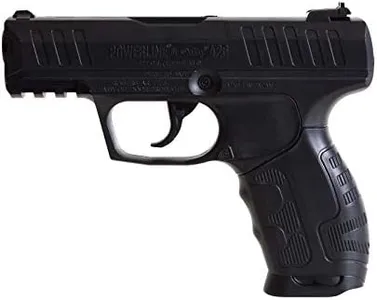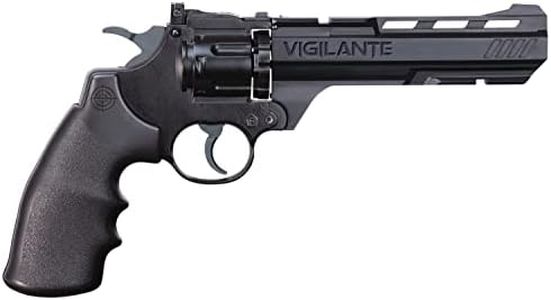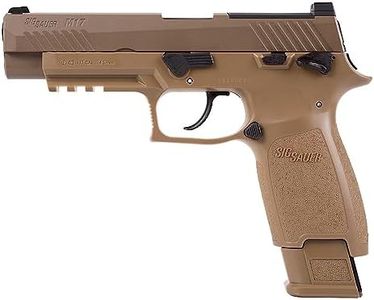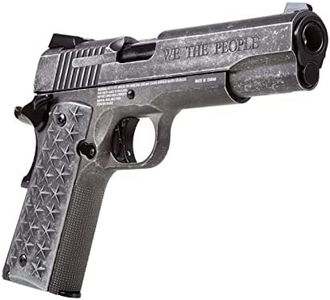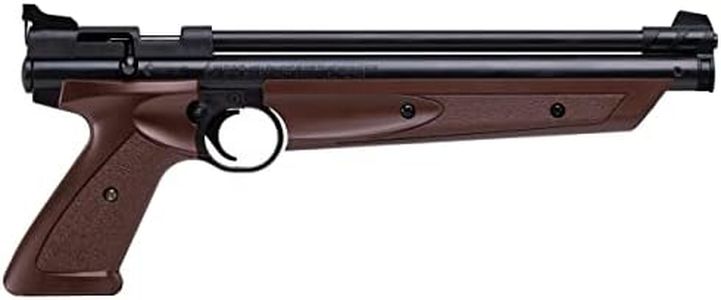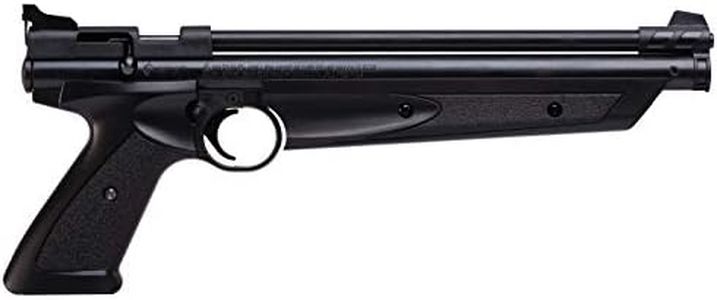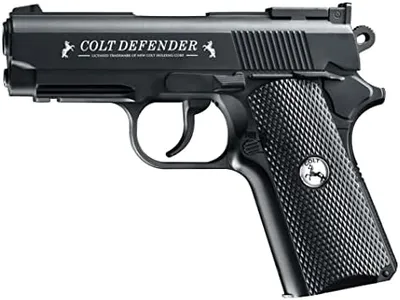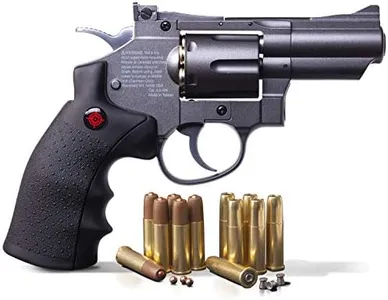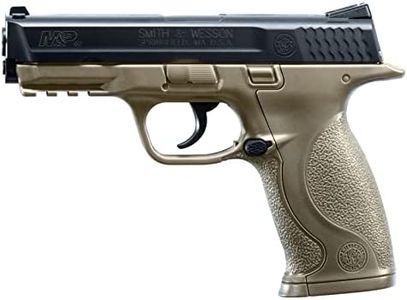10 Best Air Pistols 2025 in the United States
Our technology thoroughly searches through the online shopping world, reviewing hundreds of sites. We then process and analyze this information, updating in real-time to bring you the latest top-rated products. This way, you always get the best and most current options available.

Our Top Picks
Winner
Umarex Glock 19 Gen3 .177 Caliber BB Gun Air Pistol
Most important from
15373 reviews
The Umarex Glock 19 Gen3 .177 Caliber BB Gun Air Pistol is designed for those looking for an accessible and enjoyable air pistol experience. It features a 15-shot capacity and is powered by a 12-gram CO2 cartridge, which provides a decent velocity of up to 410 feet per second. This makes it suitable for casual shooting, target practice, or even backyard plinking. The licensed Glock markings add a touch of authenticity for fans of the brand.
One of the key strengths of this air pistol is its build quality. The polymer frame combined with a metal barrel ensures durability while keeping the weight manageable at around 1.6 pounds. The fixed Glock-style sights contribute to its accuracy, making it easier to aim at targets. Additionally, it comes with an integrated Weaver rail, allowing users to attach accessories such as lights or lasers, which can enhance the shooting experience.
There are a few drawbacks to consider. The CO2 cartridge is not included, which adds an extra cost and a bit of inconvenience since users will need to purchase them separately. Also, while the frame is designed for ergonomics, some users may find it less comfortable for extended periods of use compared to full-sized firearms. The air pistol's velocity may not meet the expectations of those looking for a high-performance option, though it should suffice for casual users.
Most important from
15373 reviews
Umarex GLOCK 17 Blowback .177 Caliber BB Gun Air Pistol, Gen3
Most important from
6416 reviews
The Umarex GLOCK 17 Blowback .177 Caliber BB Gun Air Pistol is a solid choice for both recreational shooting and training due to its realistic design and operation. Powered by a 12-gram CO2 cartridge, it delivers a velocity of up to 365 feet per second, making it suitable for plinking and target practice. The blowback action adds a touch of realism that many users appreciate, enhancing the shooting experience. With an 18-shot magazine and full metal construction, this air pistol is designed for durability and performance.
Accuracy is well-regarded, thanks to its fixed Glock-style sights, making it easier for users to aim. The weight and feel mimic that of a real firearm, providing good ergonomics for comfortable handling during extended use. It also fits most aftermarket duty holsters, which is a nice addition for those who may want to carry it.
There are some drawbacks to consider. The requirement for CO2 cartridges means users will need to keep a supply on hand, which can add to ongoing costs. Additionally, while the blowback feature is enjoyable, it may not be ideal for beginners who are still learning to handle firearms safely. Some users may also find the weight to be slightly on the heavier side compared to other air pistols.
Most important from
6416 reviews
Umarex 2255212 Glock 19X Gen5 .177 Caliber BB Gun Air Pistol, One Size, Tan
Most important from
1746 reviews
The Umarex 2255212 Glock 19X Gen5 .177 Caliber BB Gun Air Pistol is a solid choice for enthusiasts and casual shooters alike. Powered by CO2, it delivers consistent power with an 18-round capacity drop-free magazine, making it capable of semi-automatic firing. This air pistol stands out with its full metal slide and blowback action, which adds a realistic feel to each shot. The build quality is robust, with a metal frame and barrel that assure durability.
Weighing 1.7 pounds, it has a substantial feel that mirrors a real firearm well, enhancing the shooting experience. The .177 caliber BB is standard for air pistols, offering a good balance between power and safety for target practice and casual plinking. Its velocity is suitable for most non-hunting activities, though it may not meet the needs of users looking for higher precision or more powerful shots.
The trigger action is semi-auto, allowing for rapid firing of rounds, which is a plus for those looking for a more engaging shooting session. Ergonomically, the Glock 19X design is user-friendly, fitting comfortably in most hands due to its well-known Glock ergonomics. The tan color adds a unique aesthetic, although this is subjective and may not appeal to everyone. While the product does well in customer satisfaction, some users might find the CO2 power source a recurring cost factor. This air pistol is best suited for those who prioritize realistic feel, build quality, and semi-automatic action in their shooting practice.
Most important from
1746 reviews
Buying Guide for the Best Air Pistols
Choosing the right air pistol can be a rewarding experience, whether you're looking for a tool for target practice, plinking, or even small game hunting. The key to making the best choice is understanding the various specifications and how they align with your needs. By focusing on the right specs, you can ensure that you get an air pistol that meets your expectations and provides a satisfying shooting experience.FAQ
Most Popular Categories Right Now
